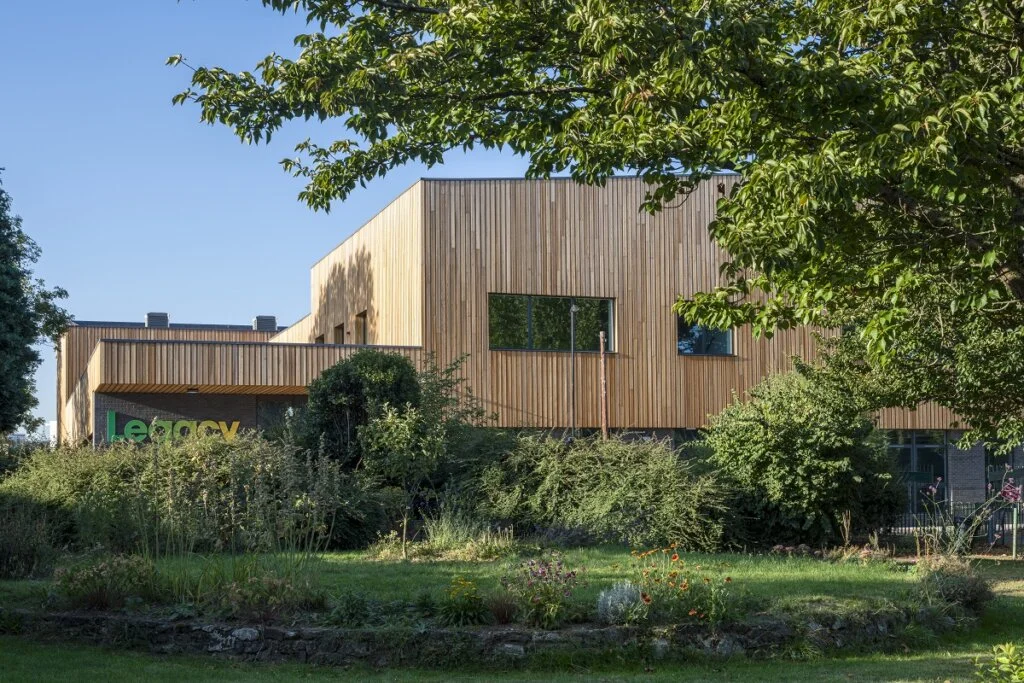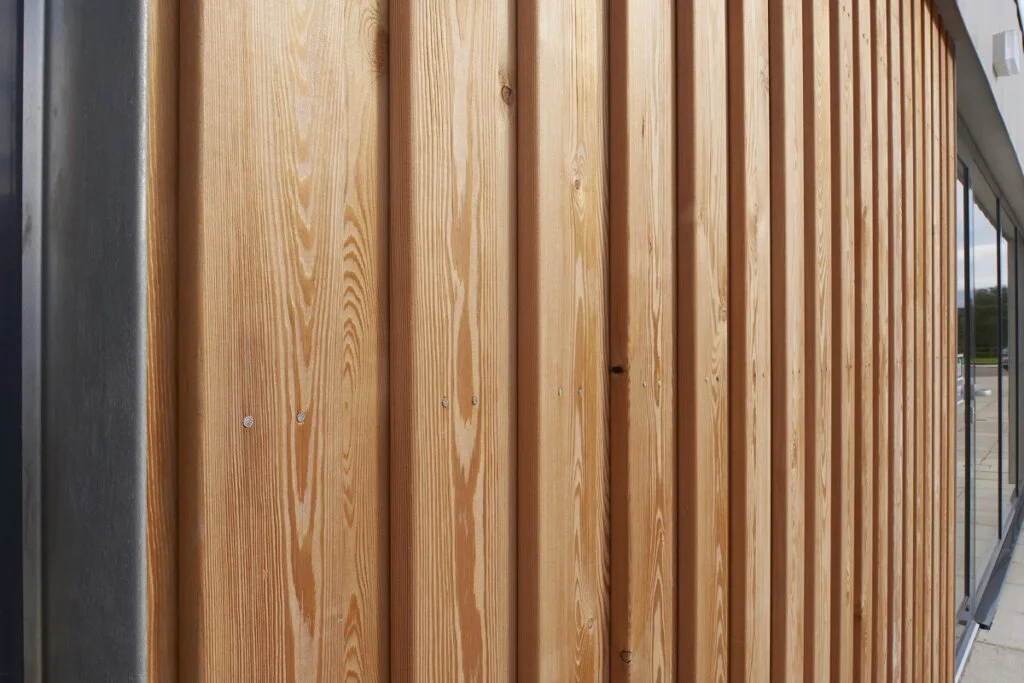Fire performance classes
The reaction to fire performance of timber cladding is defined under EN 13501-1, and construction products are assigned a Euroclass rating under this system. The Euroclass system comprises ratings from A - F, and describes characteristics such as flame spread, ignitability, heat release, smoke production, burning droplets etc. The ratings system and examples of each category can be found in the table below.
| Classification | Definition | Description | Examples |
|---|---|---|---|
| A1 | Non-combustible | No contribution to fire | Glass/ Stone/ Concrete |
| A2 | Limited combustibility | Very limited contribution to fire | Gypsum Boards with thin coverings (eg paper faced) |
| B | Combustible | Limited contribution to fire | Some flame retardant treated wood products* |
| C | Combustible | Minor contribution to fire | Some flame retardant treated wood products* |
| D | Combustible | Medium contribution to fire | Most wood based panels over 390kg/m³ in density* |
| E | Combustible | High contribution to fire | Some wood panel systems/ Plastic based insulation/ Composites |
| F | Unclassified | Not tested | N/A |
Within the fire performance classes described above, further limitations of smoke and burning droplet production are taken into account in certain situations. This is normally applied to Euroclass A-D categories in specific circumstances, and would be written in the format Euroclass B-s1, d0.

Fire safety – Building standards in England and Wales
Fire standards for buildings in England and Wales.
Learn more
Fire safety – Building standards in Scotland
Fire standards for building standards in Scotland.
Learn more
Fire retardant timber cladding
The safety of a building’s occupants and users is of paramount importance to the design of any structure.
Learn more
What fire rating do I need?
Life safety is the paramount objective of fire safe building design.
Learn more